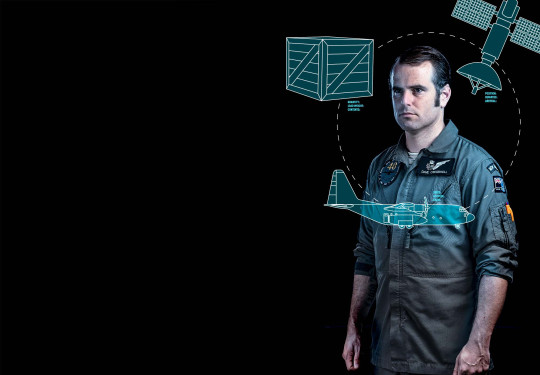Satellite Connections
Recently we asked the future leaders of the Air Force what they thought their jobs would look like in 20 years. Take a look at what Flight Sergeant Dave Creswell thought would happen to the air loadmaster trade in two decades.
18 March, 2022
Air loadmasters operating in the cargo compartments of C-130 Hercules will be moving from 1960s technology to 21st century high tech systems, including using space satellite information to communicate across the world, within a few years, Flight Sergeant Dave Cresswell says.
The new C-130J Hercules will bring with it technology that will leave the “old school” slide rules and mechanical systems in its wake, he said.
The new model has more automated systems for the weights and balance and cargo handling. All the load planning will be done with the aircraft computer (Flight Management System). The computer software will do a lot of the weight and balance and aerial delivery calculations.
“So we will be moving from pen and paper and a slide rule to entering information into the aircraft computer.”
While many aspects of the job will remain the same, loadmasters may be required to also pick up other specialities with battle space management, mission planning, and helping with aircraft communications, Flight Sergeant (F/S) Cresswell said.
“The four to five-person crew will need to work together to process large quantities of information, which becomes critical when you have a smaller crew. The ability to load share information amongst crew members becomes more important compared to larger crews.”
Reliance and integration with spacebased assets will increase with the new aircraft platforms and the space realm is going to be critical to get the most out of what the aircraft are capable of doing, he said.
“This will revolve around satellite communication, imagery and navigation. A lot of systems now rely on a GPS time and GPS navigation. Weather forecasting and global communication are space-based.
“The Hercules has a satellite phone and data link (text message/email) where we can call or message anyone in the world when we are flying. In the future with the newer models, we can potentially go to video calling and livestreaming information.
“We will become less restricted with the bandwidth that the aircraft is capable of because we will have enhanced systems that can manage large amounts of information.”
Satellite imagery and communications will also play a major role with increased natural disasters, here and in the Pacific, as a result of climate change, F/S Cresswell said.
“We will see an increase in providing support to places affected and may see more events like last year’s flooding in Canterbury and Westport, as well as extended cyclone seasons in the Pacific.
“We will find that more and more areas are going to be affected by climate change, which will likely mean we will be asked to provide additional support domestically and to the wider Pacific and our new aircraft will be more than capable of providing that support.”
